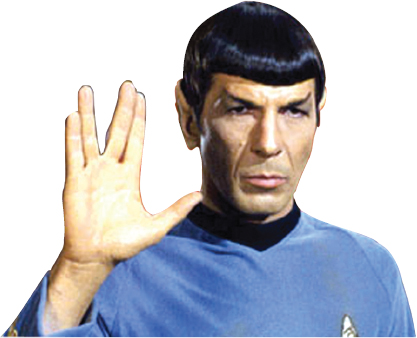Facial Expressions

Consider the character Spock, the half-
As humans, we are wired to use our faces to indicate emotions (Fridlund & Russell, 2006). Although the reasons behind our facial expressions might be difficult to ascertain, several specific expressions are common across all cultures (Ekman & Friesen, 1971). A smile, for example, usually indicates happiness; a frown, sadness; raised eyebrows tend to indicate surprise, and wrinkled eyebrows, concern (see Figure 4.1).
Blind children, who cannot learn to mimic facial movements through sight, exhibit sadness, anger, disgust, fear, interest, surprise, and happiness in the same way that sighted people exhibit these feelings (Eibl-

Although we’re fairly adept at deciphering these common expressions of emotion, we’re not necessarily experts at decoding all facial expressions (Bavelas & Chovil, 2006). That’s because the human face can produce more than a thousand different expressions (and as many as twenty thousand if you take into account all of the combinations of the different facial areas) (Ekman, Friesen, & Ellsworth, 1972; Harrigan & Taing, 1997). Moreover, our emotions can be concealed by facial management techniques, conscious manipulation of our faces to convey a particular expression.
One common facial management technique is masking, replacing an expression that shows true feeling with an expression that shows appropriate feeling for a given interaction. Actors use masking all the time. But you also use it when you smile at customers at the restaurant where you work even though you’re in a horrible mood and wish they’d leave (Richmond, McCroskey, & Payne, 1991).